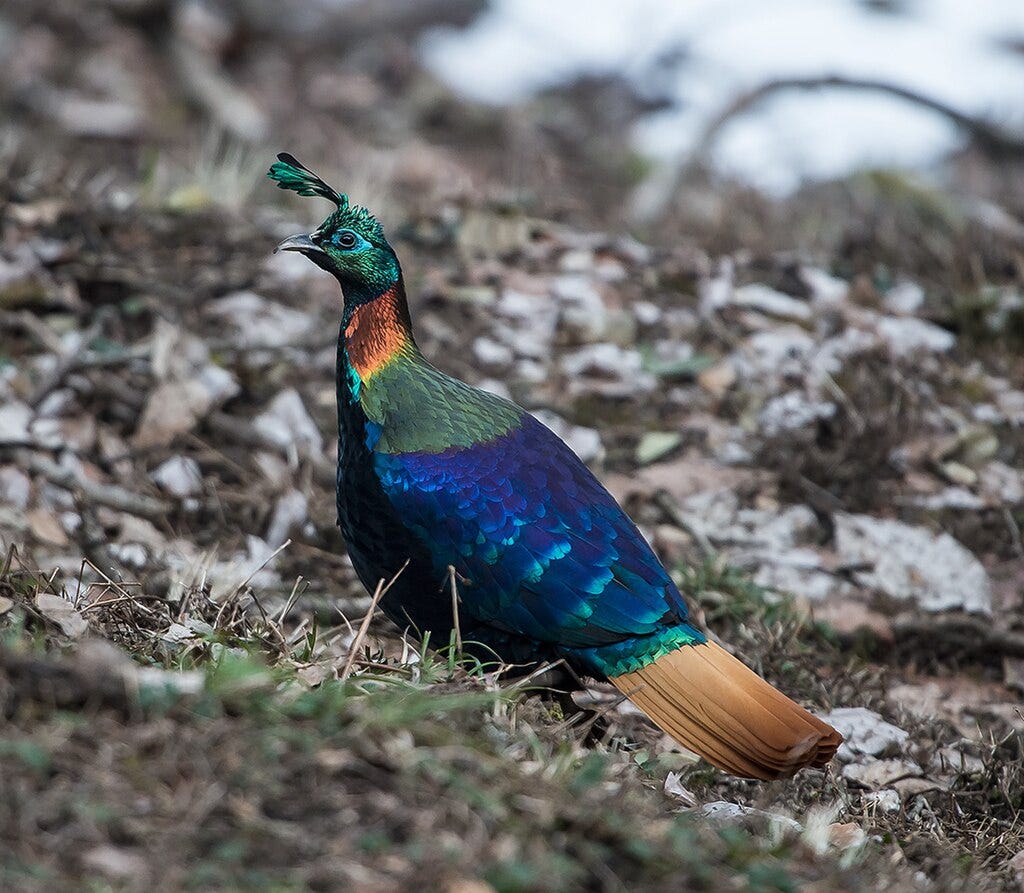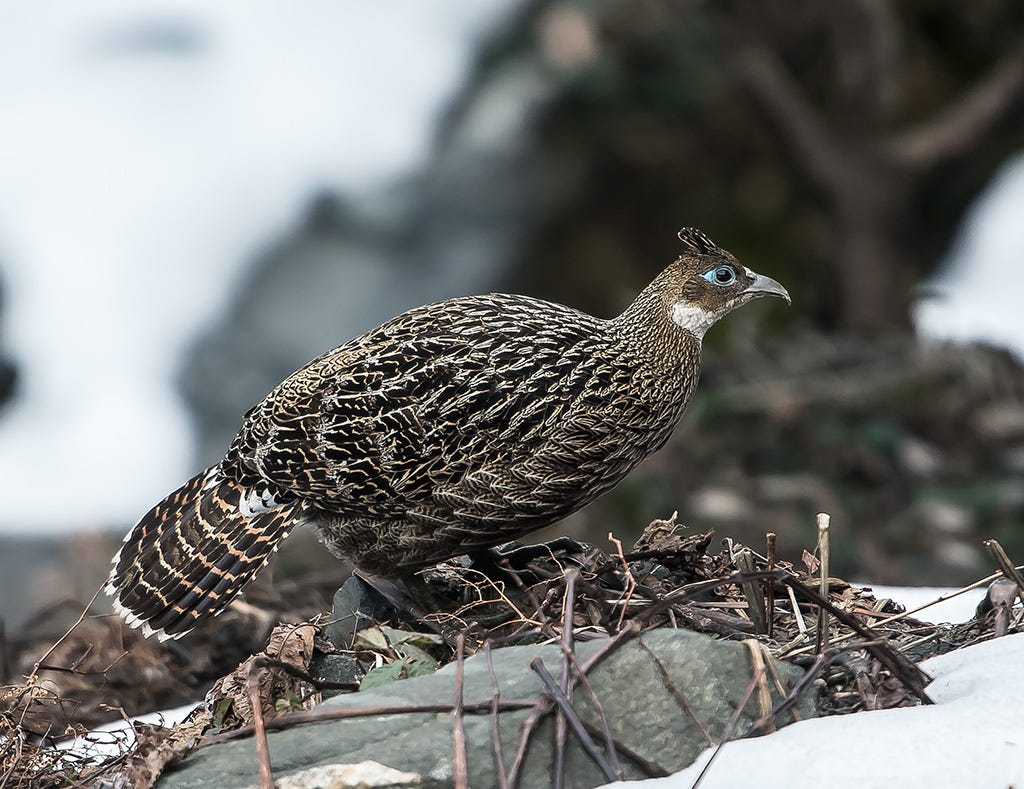The Himalayan Monal’s dazzling appearance and ecological importance make it a true jewel of the Himalayas. By understanding and protecting this species, we contribute to the preservation of the fragile ecosystems it represents. The Himalayan Monal, often called the “bird of nine colors,” is not only the national bird of Nepal but also an icon of the Himalayan wilderness. Its iridescent beauty and unique behaviors make it a favorite among bird enthusiasts. Here are ten fascinating facts about this stunning bird:
1. Spectacular Appearance
The male Himalayan Monal is famous for its vibrant, multicolored plumage. Its metallic green crest, shimmering blue throat, and red-orange back make it one of the most striking pheasants in the world. In contrast, females are brown, blending well with their surroundings for camouflage during nesting
.
2. National Symbol of Nepal
The Himalayan Monal is the national bird of Nepal, symbolizing the rich biodiversity and cultural heritage of the Himalayan region.
3. Courtship Displays
During the breeding season, males engage in elaborate courtship dances. By spreading their tail and wings and flaunting their iridescent feathers, they attract potential mates. This ritual also teaches younger males the importance of visual displays in reproduction.
4. High-Altitude Habitat
Monals inhabit alpine meadows, forest edges, and scrublands at elevations of 2,400 to 4,500 meters. Their range spans the Himalayas, including Nepal, India, Bhutan, and parts of China.
5. Adaptations for Extreme Climates
Living in harsh mountainous regions, the Monal is well-adapted to cold environments. Its thick plumage provides insulation, while its strong legs and claws are ideal for digging through snow in search of food.
6. Diet and Foraging
Himalayan Monals are omnivores, feeding on roots, seeds, tubers, insects, and small invertebrates. Their strong beaks help them dig into the ground, making them an integral part of the ecosystem by aiding soil aeration.
7. Monogamous Pair Bonds
Monals are primarily monogamous, forming strong pair bonds during the breeding season. Females take the lead in nesting, creating simple ground nests concealed by vegetation to protect their eggs from predators.
8. Cultural and Mythological Significance
In Indian and Nepali folklore, the Monal is often celebrated for its beauty. It is frequently mentioned in traditional songs, art, and even associated with certain deities
.
9. Conservation Status
Though not endangered, the Himalayan Monal is classified as “Least Concern” by the IUCN. However, habitat loss, hunting for feathers, and human encroachment pose significant threats to its population. Conservation efforts in protected areas, such as the Great Himalayan National Park, help safeguard its future.
10. Symbol of Beauty and Survival
Despite the challenges of living in high-altitude habitats, the Himalayan Monal thrives as a resilient symbol of the Himalayan ecosystem. Its vibrant presence serves as a reminder of the importance of conserving biodiversity.







